Kenneth L. Gentry Jr.'s Blog, page 9
December 20, 2024
POSTMILLENNIALISM IN THE GOSPELS (3)
PMW 2024-098 by Kenneth L. Gentry, Jr.
Having well-introduced the presence of the postmillennial hope in Jesus’ teaching in the Gospels, we now come to his formally commissioning his disciples for world-wide dominion. Christianity is not to end up like the Essenes in Qumran: a brief blip in religious history destined to quickly fade away. Christ is establishing his kingdom for the long run, as we can see in the Great Commission
As a king ruling over a kingdom destined to grow, the Lord directs his servants to promote that growth. And as their sovereign, he not only commands their labor but promises his presence with them to accomplish his goal. He is a king with a mission.
Christ’s post-resurrection, pre-ascension Great Commission clearly declares his enthronement and his mission to world conquest. We must hear and follow the sovereign declaration of the risen Lord.
“And Jesus came up and spoke to them, saying, ‘All authority has been given to Me in heaven and on earth. Go therefore and make disciples of all the nations, baptizing them in the name of the Father and the Son and the Holy Spirit, teaching them to observe all that I commanded you; and lo, I am with you always, even to the end of the age.’” (Matt 28:18–20)
Let’s closely consider the Great Commission in terms of its significance as a foundation stone of postmillennialism.
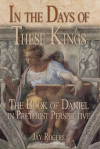
In the Days of These Kings: The Book of Daniel in Preterist Perspective
by Jay Rogers
This orthodox preterist analysis of Daniel is not a book, but a library. Extremely helpful for the postmillennial orthodox preterist.
For more study materials, go to: KennethGentry.com/
THE KING’S AUTHORITY
Christ prefaces the actual commission with a bold — and essential — claim: “All authority has been given to Me in heaven and on earth.” The word “given” is significant for both its position in the sentence and its tense. “Given” appears in the first position for emphasis and is a past tense declaration. But how is this significant?
Obviously the past point in time when this occurs is at Jesus’ resurrection from the dead. The historical circumstances of the Great Commission suggest this, for Christ utters the Commission shortly after his resurrection (cf. Matt 28:1–10, 16). But other passages confirm this understanding. Let’s note just two statements from Paul’s writings.
• Romans 1:4: “was declared the Son of God with power by the resurrection from the dead.”
• Philippians 2:8–9: “He humbled Himself by becoming obedient to the point of death, even death on a cross. Therefore also God exalted Him, and bestowed on Him the name which is above every name.”
Thus, at his resurrection Christ steps out of his state of humiliation and suffering to his estate of exaltation and glory. Whereas previously he spoke only in submission to the Father (John 5:19, 30; 6:38; 8:28; 12:49; 14:10, 24), now he speaks with final authority due to his completed work.
As noted in the preceding chapter, this grant of kingly authority fulfills Psalm 2:6–7. The resurrection establishes Christ as the King possessing “all authority” — in the first century.
 The Beast of Revelation (246pp); Before Jerusalem Fell: Dating the Book of Revelation (409pp); Navigating the Book of Revelation: Special Studies on Important Issues (211pp).
The Beast of Revelation (246pp); Before Jerusalem Fell: Dating the Book of Revelation (409pp); Navigating the Book of Revelation: Special Studies on Important Issues (211pp).
In the Logos edition, these volumes by Ken Gentry are enhanced by amazing functionality. Important terms link to dictionaries, encyclopedias, and a wealth of other resources in your digital library. Perform powerful searches to find exactly what you’re looking for. Take the discussion with you using tablet and mobile apps. With Logos Bible Software, the most efficient and comprehensive research tools are in one place, so you get the most out of your study.
For more study materials, go to: KennethGentry.com
Matthew 28:18 indicates that something new occurs at his resurrection. He is now given “all authority” to go along with his kingship. The spoils of victory are his — victory over depravity, death, and the devil belong to him (Col 2:14–15; Heb 2:13, 14; 10:12–14). His newfound authority entails universal dominion, for it encompasses “heaven and earth.” Thus, his authority is identical with God the Father’s who possesses unbounded lordship: God is “Lord of heaven and earth” (Matt 11:25; cp. Gen 14:19, 22; Ezra 5:11; Luke 10:21; Acts 17:24).
Not only is Christ’s authority above all other, but it penetrates every realm. It is not just in the spiritual arena (the inner-personal realm), but in all spheres of life. It universally and comprehensively serves as the basis for a truly Christian worldview. Let us see how this is so.
The “all” which defines “authority” is here used in the distributive sense, entailing every form of authority. That is, each and every realm of thought and activity is under his authoritative command: ecclesial, familial, and personal — as well as ethical, social, cultural, financial, judicial, legal, political, and every other realm. The rich reward of his redemptive labor is sovereign lordship over all (Eph 1:19–23; Col 1:18; Phil 2:9–10; 1 Pet 3:21–22; Rev 1:5; 17:14; 19:16).
THE KING’S COMMAND
On the basis of this universal authority Christ commissions his disciples to “go therefore and make disciples of all the nations” (Matt 28:19a). This fits perfectly with his world-encompassing authority. The ascended Christ mandates that his Church promote and expand his kingdom in the world. Would he assert his sovereign lordship so vigorously and command his people so majestically were it not his intention that they fulfill his obligation?
Greatness of the Great Commission (by Ken Gentry)
An insightful analysis of the full implications of the great commission as given in Matthew 28:18-20. Impacts postmillennialism as well as the whole Christian worldview.
See more study materials at: www.KennethGentry.com
We must recognize what the Great Commission actually commands. It does not send forth his disciples merely to “witness” or “proclaim” or “preach” the gospel (though all of these activities are involved).
According to the Commission’s clear wording Christ commands his disciples actually to “make disciples of all the nations.” That is, they must actually bring the nations under his discipleship yoke, by bringing them to salvation and baptizing them “in the name of the Father and the Son and the Holy Spirit.” This is in keeping with his declaration elsewhere: “Now is the judgment of this world; now the ruler of this world will be cast out. And I, if I am lifted up from the earth, will draw all men to Myself” (John 12:31–32).
THE KING’S PROMISE
What is more, not only does he authoritatively command them to disciple all the nations on the basis of his redemptively-won, universal authority, but he even promises them that he will be with them (and all his people) “throughout all [literally] the days” (Matt 28:20). That is, he will be with them through the many days until the end to oversee the successful completing of the task.
This allows for the gradual development of his kingdom program through time. All nations will be discipled before the end comes. This is the postmillennial hope.
Interpreting Revelation (5 mp3 lectures)
by Ken Gentry
Lectures on Revelation discussing its date of writing, preterist interpretation, and leading features. Very helpful, basic introduction to Revelation. Question and answer sessions.
See more study materials at: www.KennethGentry.com
December 17, 2024
POSTMILLENNIALISM IN THE GOSPELS (2)
 PMW 2024-097 by Kenneth L. Gentry, Jr.
PMW 2024-097 by Kenneth L. Gentry, Jr.
This is the second in a series on postmillennialism in the Gospels. In this article I will highlight the optimistic expectation for the advance of the kingdom in history.
Jesus presents his kingdom through his teaching and his practice, his words and his actions. He especially describes his kingdom in his Kingdom Parables, one of his major recorded discourses (Matt 13:1–52). Here he speaks in parables so that his followers might “know the mysteries of the kingdom of heaven” (Matt 13:11). These parables explain the mystery character of the kingdom, highlighting its hidden nature, small presence, and wavering condition (Matt 13:9–17, 19–22, 35–28, 31, 33, 44–45).
The Lord does not present a kingdom such as the first-century Jews and current-day dispensationalists expect. He does not lead a catastrophically-imposed, immediately-victorious, globally-dominating, military-political kingdom. Rather, he teaches something radically different. In fact, even his followers (who held first-century Jewish expectations) are initially confused about his kingdom: they “were hoping that it was He who was going to redeem Israel” (Luke 24:21; cp. Matt 13:36).
As per the postmillennial system, the Kingdom Parables sketch the present, spiritual, developmental, and dominating nature of the kingdom. This present, spiritual, developmental nature of the kingdom contradicts the first-century Zionistic and current-century dispensationalist conceptions. The dominating nature of the kingdom clashes with the amillennial scheme. Let us consider three of the seven Kingdom Parables to mold our understanding.
Great Tribulation: Past or Future?
(Thomas Ice v. Ken Gentry) 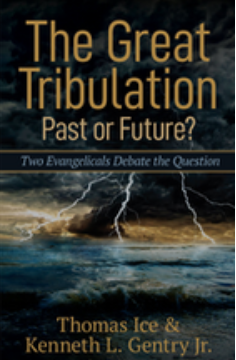
Debate book on the nature and timing of the great tribulation. Both sides thoroughly cover the evidence they deem necessary, then interact with each other.
See more study materials at: www.KennethGentry.com
THE PARABLE OF THE SOWER
In his first parable (Matt 13:3–23) we find material that fits well within a postmillennial scheme and differs greatly from dispensationalist and premillennialist expectations. This parable underscores Christ’s rejection of any political and militaristic conceptions of his kingdom. We see his resistance to such a view in another context when he perceives that a crowd was “intending to come and take Him by force, to make Him king,” for he “withdrew again to the mountain by Himself alone” (John 6:15).
In this parable Jesus notes that the kingdom which he proclaims spreads by means of God’s Word (cp. Matt 26:51–52; Luke 17:30–31) — not by “sword’s loud clashing.” And that its message fails to convert some hearers (Matt 13:18–23) — it will not dramatically win the victory all at once. He even explains that Satan hampers the kingdom’s growth (Matt 13:19). But despite all of this, the kingdom nevertheless gradually “bears fruit, and brings forth, some a hundredfold, some sixty, and some thirty” in those who convert (Matt 13:23). Furthermore, in the first century Christ sows his kingdom in the world in seed form — rather than presenting it as a full-blown kingdom coming dramatically at some distantly future date.
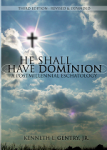
He Shall Have Dominion
(paperback by Kenneth Gentry)
A classic, thorough explanation and defense of postmillennialism (600+ pages). Complete with several chapters answering specific objections.
See more study materials at: www.KennethGentry.com
THE PARABLE OF THE MUSTARD SEED
In the parable of the mustard seed, Christ teaches that: “The kingdom of heaven is like a mustard seed, which a man took and sowed in his field, which indeed is the least of all the seeds; but when it is grown it is greater than the herbs and becomes a tree, so that the birds of the air come and nest in its branches” (Matt 13:31–32).
All would agree that this image symbolizes something magnificent beyond expectation: a minuscule mustard seed grows to become a large tree. Though birds could easily eat a mustard seed, the mature mustard plant becomes large enough that they flock to it in order to build nests in it for their young.
The Lord seems to build this parable by adapting imagery suggested by Ezekiel’s kingdom prophecy in Ezekiel 17:22–24:
“I will also take of the highest branch of the high cedar, and will set it; I will crop off from the top of his young twigs a tender one, and will plant it upon an high mountain. In the mountain of the height of Israel will I plant it: and it shall bring forth boughs, and bear fruit, and be a goodly cedar: and under it shall dwell all fowl of every wing; in the shadow of the branches thereof shall they dwell. And all the trees of the field shall know that I the Lord have brought down the high tree, have exalted the low tree.”
Here Ezekiel is symbolizing the universal magnificence and exaltation of the kingdom of heaven by contrasting it to Babylon’s kingdom (Eze 17:14). God’s kingdom will graciously provide shelter for all when it comes to full fruition in history. Both Ezekiel’s prophecy and Jesus’ parable point to the promised dominance of the heavenly kingdom in history: the small twig is planted on a high mountain above all the trees allowing birds to nest in its branches; the tiny mustard seed is planted and becomes the largest plant in the garden allowing birds to nest in its branches.
So then, the Mustard Seed Parable speaks of the kingdom’s massive, gradualistic extension in the world (cp. Matt 13:37–38). Clearly the kingdom will grow to a large size over time. It will not remain insignificantly small, nor will it erupt on the historical scene by catastrophic imposition. This fits the Old Testament expectation that he will “rule from sea to sea / And from the River to the ends of the earth” (Psa 72:8).
House Divided: The Break-up of Dispensational Theology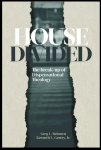 By Greg Bahnsen and Ken Gentry
By Greg Bahnsen and Ken Gentry
This book presents and defends Christian Reconstruction theology, particularly theonomic ethics and postmillennial eschatology. It does to by responding to dispensationalism’s social and exegetical theology.
For more educational materials: www. KennethGentry.com
THE PARABLE OF THE LEAVEN
The Lord’s next parable employs leaven as the key symbol. It reads: “The kingdom of heaven is like leaven, which a woman took and hid in three measures of meal till it was all leavened” (Matt 13:33).
Here Christ symbolizes the kingdom’s intensive progress in the world. Leaven is a penetrative agent that incrementally diffuses itself throughout its host from within (cf. Luke 17:20–21), for “a little leaven leavens the whole lump of dough” (1 Cor 5:6; Gal 5:9).
Thus, here the leaven will thoroughly penetrate the whole three pecks of meal (which represents “the world,” as in Matt 13:38). The kingdom will penetrate all (Matt 13:33). This was implied in other Kingdom Parables: the kingdom will produce a hundred-fold return in its converts (Matt 13:8). It will dominate the field (world) (Matt 13:30). It will grow to great stature (Matt 13:31–32).
THE KINGDOM PARABLES’ THEME
Both the Parable of the Mustard Seed and the Parable of the Leaven present Christ’s kingdom as gradually developing in history by the process of growth. Clearly Christ here explains the progressive nature and global extent of the kingdom that he is establishing during his ministry. After all, he opens his ministry by proclaiming “the kingdom of heaven is at hand” (Matt 4:17; cp. 3:2; 10:7). Then he immediately sets out preaching that kingdom (Matt 4:23) as a present reality (Matt 5:3, 10, 19; 6:33; 9:35; 12:28), which begins in earnest in the days of John the Baptist (Matt 11:11–12).
The kingdom of Christ does not come catastrophically as a full-blown, world-dominating kingdom; rather it comes gradually as it grows toward worldwide victory. This gradualism contradicts the premillennial view. Its dominance contradicts the amillennial position.
To quote a famous general, “I will return.” In my next article.
Click on the following images for more information on these studies:
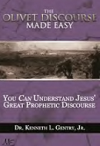

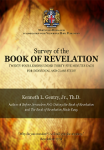
December 13, 2024
POSTMILLENNIALISM IN THE GOSPELS (1)
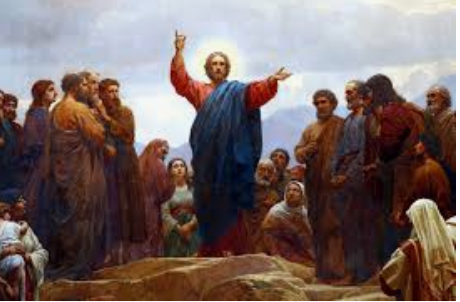 PMW 2024-097 by Kenneth L. Gentry, Jr.
PMW 2024-097 by Kenneth L. Gentry, Jr.
THE APPROACHING OF THE KINGDOM
In the Gospels we discover Christ being introduced to Israel and the world through the ministry of John Baptist (Luke 1:76). John himself even fulfills prophecy by being the Messiah’s forerunner (Isa 40:3; Matt 3:3). He prepares the way for Jesus by preaching: “Repent, for the kingdom of heaven is at hand” (Matt 3:2). And Jesus picks up on this theme as he begins his own ministry in Mark 1:14–15:
“And after John had been taken into custody, Jesus came into Galilee, preaching the gospel of God, and saying, ‘The time is fulfilled, and the kingdom of God is at hand; repent and believe the gospel.’”
Let’s consider three crucial factors flowing out of this important pronouncement.
First, Jesus declares “the time” has arrived. What is “the time” to which he refers? It surely speaks of the prophetically-anticipated time, the time of the coming of David’s greater Son to establish his kingdom. We may surmise this in that he immediately adds: “the kingdom of God is at hand.” After all, the Father sent Christ into the world in “the fullness of time” (Gal 4:4; Eph 1:10), to initiate the “favorable year of the Lord” (Luke 4:16–21). This favorable year of the Lord is also called “the acceptable time . . . the day of salvation” (2 Cor 6:2). It is the very day righteous men and angels in the old covenant long desired to see (Matt 13:17; Luke 2:28–30; 10:24; John 8:56; Heb 11:13, 39–40; 2 Pet 1:10–11).
Second, Jesus proclaims that the time “is fulfilled.” He does not say “the time may be fulfilled — if you will receive the promise.” Or: “the time will be fulfilled at some unknown date in the future.” Rather he forthrightly declares that the God-ordained time is fulfilled now. Because of this Paul can later call this “the now time” (2 Cor 6:2; cf. Rom 3:21–26; Eph 3:10; 2 Tim 1:9–10). Though John and Jesus announce that the time is fulfilled, Jerusalem did not recognize the coming of “the time” (Luke 19:44; cf. Matt 23:37).
[image error]For more information and to order click here.
Navigating the Book of Revelation (by Ken Gentry)
Technical studies on key issues in Revelation, including the seven-sealed scroll, the cast out temple, Jewish persecution of Christianity, the Babylonian Harlot, and more.
See more study materials at: www.KennethGentry.com
Third, “the kingdom of God is at hand.” Since “the time” has arrived, and since it is “fulfilled,” the kingdom of God is finally close, being right at hand. The coming of the kingdom does not await the distantly future return of Christ. Rather, during his first coming, at the very opening of his ministry, Jesus preaches that “the kingdom of God is at hand.”
All of this is crucial to our eschatological understanding — and in keeping with postmillennial expectations. The kingdom’s early new covenant revelation declares its nearness in time, not its potential nearness, and certainly not its distance. As a result of this glorious reality, Jesus promises that some of his hearers would live to see the kingdom’s acting in great power in history: “There are some of those who are standing here who shall not taste of death until they see the kingdom of God after it has come with power” (Mark 9:1).
Thus, not only is his kingdom present in his ministry, but some of his disciples will actually live to see its exhibition in power. This exhibition would not be immediately, for some of his disciples would die first. Yet this must occur within the lifetimes of others, for “some” standing there would witness it.
The announcement in Mark 9:1 apparently refers to the dramatic AD 70 destruction of the temple and the removal of the Old Testament worship system. The writer of Hebrews anticipates the old covenant’s conclusion: “When He said, ‘A new covenant,’ He has made the first obsolete. But whatever is becoming obsolete and growing old is ready to disappear” (cf. Heb 8:13; 12:25–28). This occurs as a direct result of Jesus’ prophecies of the altering of divine worship (John 4:21–23) that results from the destruction of the temple (Matt 21:33–46; 22:1–7; 23:31–24:34).
Openness Unhindered (by Rosaria Butterfield)
Dr. Butterfield goes to great lengths to clarify some of today’s key controversies. She also traces their history and defines the terms that have become second nature today-even going back to God’s original design for marriage and sexuality as found in the Bible. She cuts to the heart of the problems and points the way to the solution.
See more study materials at: www.KennethGentry.com
THE ESTABLISHING OF THE KINGDOM
Jesus opens his ministry with the declaration that “the time” is “fulfilled” and the “kingdom of God” is “at hand.” Thus, we should expect the kingdom to appear in Jesus’ ministry and in the Gospel record. This is precisely what we discover in the Gospels.
Perhaps one of the clearest Gospel proofs of the presence of the kingdom is Matthew 12:28: “if I cast out demons by the Spirit of God, then the kingdom of God is come unto you.” Since Jesus does cast out demons by the Spirit of God, then the kingdom has come. The very fact that Christ invades Satan’s kingdom and takes away possessions (demoniacs, Matt 12:25–29) proves that the kingdom comes during his ministry.
Luke records for us another announcement of the kingdom’s presence in Luke 17:20–21:
“Now having been questioned by the Pharisees as to when the kingdom of God was coming, He answered them and said, ‘The kingdom of God is not coming with signs to be observed; nor will they say, “Look, here it is!” or, “There it is!” For behold, the kingdom of God is in your midst.’”
Notice that Christ answers the Pharisees’ specific question regarding “when” the kingdom should come. He answers them in the present tense, informing them that the kingdom is present now. It is not awaiting a future, visible, Armageddon-introduced manifestation, complete with signs; it exists spiritually now and among them.
Because of this, even during his ministry men enter into it: “The Law and the Prophets were proclaimed until John; since then the gospel of the kingdom of God is preached, and everyone is forcing his way into it” (Luke 16:16). Christ’s kingdom is not awaiting some distant future coming.
[image error]For more information and to order click here.
" data-image-caption="" data-medium-file="https://postmillennialworldview.com/w..." data-large-file="https://postmillennialworldview.com/w..." class="alignright size-full wp-image-211" src="https://postmillennialworldview.com/w..." alt="" />Perilous Times: A Study in Eschatological Evil (by Ken Gentry)
Technical studies on Daniel’s Seventy Weeks, the great tribulation, Paul’s Man of Sin, and John’s Revelation.
See more study materials at: www.KennethGentry.com
During his trial under Pilate, the Lord speaks directly of his kingship and kingdom:
“Jesus answered, ‘My kingdom is not of this world. If My kingdom were of this world, then My servants would be fighting, that I might not be delivered up to the Jews; but as it is, My kingdom is not of this realm.’ Pilate therefore said to Him, ‘So You are a king?’ Jesus answered, ‘You say correctly that I am a king. For this I have been born, and for this I have come into the world, to bear witness to the truth.’” (John 18:36–37a; see also: Matt 27:11; Mark 15:2; Luke 23:3)
Here Jesus defines his kingdom as something other-worldly, rather than as a this-worldly political kingdom. His kingdom differs from Caesar’s political kingdom — and it differs from the dispensationalist’s political conception of the Messianic kingdom. He claims to have his own “servants” (even though they do not fight with sword to defend Him, John 18:36b). He even clearly states “I am a king” (John 18:37a). And, as we might expect, given our study of Mark 1:14–15, he states that he has come into the world for the purpose of being king (John 18:37c). Thus, his kingdom is already present for we read of Jesus’ affirmation that he is a king: “You say correctly that I am a king” (John 18:37a).
In all of this we see Christ himself stating that he was establishing his Messianic kingdom during his earthly ministry in his first coming. This is precisely the position of postmillennialism, though this contradicts the position of dispensationalism.
To be continued.
Click on the following images for more information on these studies:


[image error]
December 10, 2024
TWO AGES ARE NOT TWO COVENANTS
 PMW 2024-095 by Kenneth L. Gentry, Jr.
PMW 2024-095 by Kenneth L. Gentry, Jr.
Through my GoodBirth Ministries I am seeking to raise support to allow me to work virtually full time on a new book on the two ages of redemptive history. This two-age concept, along with its corollary, the “Now but Not Yet” principle, are essential for understanding God’s plan in history. Much confusion regarding this matter reigns among evangelical Christians, especially among those who are not well-trained in academic issues related to eschatology.
In this article I simply want to briefly introduce the idea of the two ages. And I want to do so by showing that it has wide support among the three major eschatological views (obviously excluding dispensationalism, which is losing its academic voice in the market place of ideas). In my planned book on the two ages, I will provide about 250 pages of arguments to flesh out this crucial matter. But for now, I will show that I am not alone!
Postmillennialist Dr. Greg L. Bahnsen (Victory in Jesus, 131-32)
“From the fact that ‘this world’ is interchangeable with ‘this age’ (e.g., 1 Cor. 1:20ff; 2:16; 3:19), we infer that the phrase ‘this age’ can also be understood as referring to an ethical or spiritual realm, rather than exclusively to a set period of time.
“From the perspective of New Testament theology, the ‘age to come’ has broken in on ‘this age’; those who are saved now enjoy the presence of the future age. With the first advent of Christ, God’s ordained moment has arrived (Gal. 4:4), the kingdom has drawn near (Matt. 3:2; 4:17; 10:7; Mark 1:15; Luke 10:9, 11), the great jubilee has arrived (Luke 4:!6–21), the good news of the kingdom has come into effect (Luke 16:16; Matt. 11:2–15), the Old Testament promise has been realized (Rom. 1:2; 16:25–26), the messianic marriage supper has approached (Mark 2:18–22).
“With the coming of the Spirit at Pentecost, the ‘last days’ of Joel’s prophecy have arrived, and God’s Anointed is declared to be permanently enthroned in David’s kingdom (Acts 2); this Spirit is our down payment (‘earnest’) on the future inheritance (2 Cor. 1:22; 5:5; Eph. 1:14) and the first-fruits of the resurrection order (Rom. 8:23; cf. Col. 1:18). The kingdom of God and coming age have been installed.
“After a long period of anticipation, God has now spoken to us by His Son ‘at the end of these days’ (Heb. 1:2). Christ has been manifest ‘at the end of the ages’ (Heb. 9:26), ‘in the last times’ (I Pet. 1:20). Consequently, ‘the ends of the ages has arrived’ (1 Cor. 10:11). The eschatological age has already begun, which means that ‘this age’ and ‘the age to come’ are coexistent during the present era. God’s kingdom of salvation is already experienced by some, but rejected by others.
“The ‘coming age’ and ‘this age’ live side-by-side for a time. The redemptive work of Christ has delivered us from the power of darkness (Col. 1:13) that is, from this present evil age (Gal. 1:4). Being ‘in Christ’ (in contrast to being ‘in the evil one,’ 1 John 5:19) means that the ‘new creation’ has dawned, making the old things new (2 Cor. 5:17; cf. 6:2). Therefore, it is now possible for men to ‘taste the power of the coming age’ (Heb. 6:5). Two orders (old creation and new creation, spiritual death and regeneration, damnation and salvation) are presently operative, and the Bible expresses this fact by teaching that ‘this age’ and ‘the coming age’ are currently contemporaneous.”
Reformed Eschatology in the Writings of Geerhardus Vos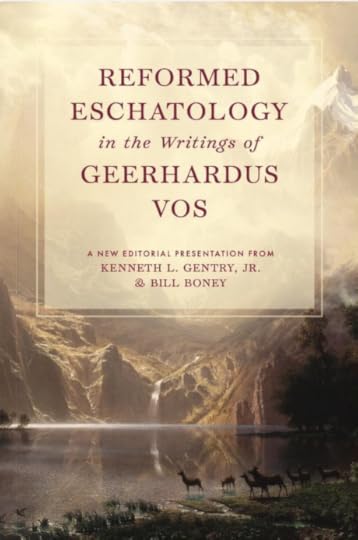
Ed. by Ken Gentry and Bill Boney
This is a collection of several key eschatological studies by the renowned Reformed theologian Geehardus Vos. We have modernized Vos’ grammar and syntax and updated his layout style according to modern publishing conventions (shorter sentences and paragraphs). We did this without changing any of Vos’ arguments.
For more information on this new Vos work or to order it, see:
https://www.kennethgentry.com/reformed-eschatology-in-the-writings-of-geerhardus-vos/
Amillennialist Dr. Anthony A. Hoekema (The Bible and the Future, 21-22; 298-299):
“The nature of New Testament eschatology may be summed up under three observations: (1) the great eschatological event predicted in the Old Testament has happened; (2) what the Old Testament writers seems to depict as one movement is now seen to involve two stages: the present age and the age of the future; and (3) the relation between these two eschatological stages is that the blessings of the present age are the pledge and guarantee of greater blessings to come.”
“At this point we should take a look at a theologian who has made a significant contribution to eschatological studies, but who has not received the attention he deserves. I refer to Geerhardus Vos (1862-1949), who was professor of Biblical Theology at Princeton Theological Seminary from 1893-1932…In his Pauline Eschatology, published in 1930, Vos further developed these insights, particularly as they reflected the teachings of the Apostle Paul. For the Old Testament writers, he states, the distinction between ‘this age’ and the ‘age to come’ was thought of simply in terms of chronological succession. But when the Messiah whose coming these Old Testament writers had predicted actually arrived on the scene, the eschatological process had in principle already begun, and therefore the simple scheme of chronological succession between this age or world and the age or world to come was no longer adequate. The Messianic appearance now began to unfold itself into two successive epochs; ‘the age to come was perceived to bear in its womb another age to come’ [Vos, The Pauline Eschatology, 36]…According to Vos, therefore, the New Testament believer lives both in the age or world and in the age or world to come at the same time. Vos would therefore agree with Dodd that there is a sense in which the age to come has already arrived. He would differ from Dodd, however, in maintaining that there will be a future Parousia or Second Coming of Christ, and a future consummation of the age or world to come in which all its potentialities will be fully realized.
The Truth about Postmillennialism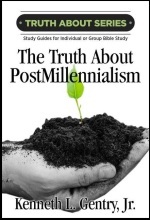 By Ken Gentry
By Ken Gentry
A group Bible study guide for explaining the optimistic prophetic hope for this world to be accomplished before Christ’s Second Coming. Establishes the postmillennial system in both the Old and New Testaments. Touches on key eschatological issues, such as creation, covenant, interpretive methodolgy, the great tribulation, the Book of Revelation, the Jewish Temple, and more. It presents and answers the leading objections to postmillennialism.Twelve chapters are ideal for one quarter of Sunday School.
See more study materials at: www.KennethGentry.com
Historic Premillennialist Dr. George Eldon Ladd (A Theology of the New Testament, 69, 72):
“There is a powerful dualism in the New Testament: God’s will is done in heaven; his Kingdom brings it to earth. In the Age to Come, heaven descends to earth and lifts historical existence to a new level of redeemed life (Rev. 21:2-3). This is hinted at, although not elaborated on, in the Gospels. Those who ‘attain to that age and to the resurrection from the dead neither marry nor are given in marriage, for they cannot die any more, because they are equal to angels and are sons of God, being sons of the resurrection’ (Lk. 20:35-36). Here is a truly inconceivable order of existence. There are no human analogies to describe existence without the physiological and sociological bonds of sex and family. But this is the will of God: to conquer evil and to bring his people finally into the blessed immortality of the eternal life of the Age to Come.”
“If God’s Kingdom is the gift of life bestowed upon his people when he manifests his rule in eschatological glory, and if God’s Kingdom is also God’s rule invading history before the eschatological consummation, it follows that we may expect God’s rule in the present to bring a preliminary blessing to his people. This is in fact what we find. The Kingdom is not only an eschatological gift belonging to the age to come; it is also a gift to be received in the old aeon.”
Postmillennialist Keith A. Mathison (From Age to Age: The Unfolding of Biblical Eschatology, 495, 451):
Mathison speaks often of the “age to come” as already present since the redemptive work of Christ was completed in AD 30. He approvingly cites G. E. Ladd: “The events of the eschatological consummation are not merely detached events lying in the future about which Paul speculates. They are rather redemptive events that have already begun to unfold within history. The blessings of the Age to Come no longer lie exclusively in the future; they have become objects of present experience. The death of Christ is an eschatological event. Because of Christ’s death, the justified person stands already on the age-to-come side of the eschatological judgment, acquitted of all guilt.” (p. 495)
On the next page, Mathison presents (amillennialist) Vos’ two-age diagram. This shows the present historical world is “this age” whereas the heavenly eternal order is the “age to come,” while since the first century coming of Christ, we live in the overlap period between the two ages. Thus, we now partake of both elements, i.e., fallenness and redemption. We now have one foot in “this age” and one in “the age to come.” As Mathison puts it on p. 451: “The life of the age to come is available now, but it will be received in fullness only at the resurrection on the last day.”
[image error]For more information and to order click here.
" data-image-caption="" data-medium-file="https://postmillennialworldview.com/w..." data-large-file="https://postmillennialworldview.com/w..." class="alignright size-full wp-image-495" src="https://postmillennialworldview.com/w..." alt="" />God Gave Wine (by Ken Gentry)
A biblical defense of moderate alcohol consumption. Considers all key biblical passages and engages the leading objections.
See more study materials at: www.KennethGentry.com
Amillennialist Dr. Herman Ridderbos (Paul: An Outline of His Theology, 488-489).
“The coming of the Lord can for this reason not only be a motive for sanctification, but also a source and ground of comfort in the present ‘affliction,’ a word that does not merely refer to an incidental setback of difficulty, but very definitely characterizes the last phase of the present world preceding the coming of Christ. Therefore the revelation of the Lord Jesus from heaven also signifies rest for those who are now in this distress (2 These. 1:6-ff). Because of this hope of the glory of God the church may glory in this affliction (Rom 5: 2-5). Affliction, suffering, and glory frequently occur in one context (Rom. 8:18), indeed in the former lie the announcement and proof of the latter (Rom. 8:19-23). Hope in the appearing of Christ (Tit. 2:13) is accordingly the distinguishing mark of the Christian life (Rom. 8:24; Gal. 5:5). As the one who will appear, Christ is the hope of glory (Col. 1:27), or in the absolute sense ‘our hope’ (1 Tim. 1:1), with whose manifestation the church, too, will be manifested in glory (Col. 3:4). It is this glory which is time and again held out in prospect to the church that now finds itself in distress and suffering (1 Cor. 15:43; 2 Cor. 3:18, 4:17; Eph. 1:18; Phil. 3:4; 2 Thess. 2:14; 2 Tim. 1:10), and on which its hope is set (Col. 1:5; 1 Thess. 5:8; Tit. 1:2, 2:13, 3:7). And with what intensity this expectation is charged all those passages prove in which the apostle strongly accentuates the ‘not yet’ of the present. These the sparks shoot, as it were, to and fro between the two poles (Rom. 8:18-ff; 2 Cor. 4:16-18); there it is evident what a living and fervent longing supports and glows through all the preaching of the apostle (cf. Rom 7:24, 25, 8:23, et al.).”
Amillennialist Cornelis P. Venema (The Promise of the Future, 26):
“In the coming of Christ, the long-awaited coming of God’s kingdom is inaugurated. In the Gospels, both John the Baptist and Jesus announce in their preaching that the kingdom of God ‘is at hand’ (literally, ‘has drawn near’, Matt. 3:2, Mark 1:15). When Christ cast out demons, he testified to the Pharisees that this was evidence that the kingdom of God ‘had come upon them’ (Matt. 12:28). Similarly, the Gospel accounts of Christ’s miracles and the authority with which he commissioned the disciples to preach the gospel of the kingdom serve to confirm that, with his coming, the Old Testament promise regarding the future coming of the kingdom is being fulfilled. Though this kingdom has not yet come in all of its fullness, it has come in the person and work Jesus Christ, in his life, death, resurrection and ascension to the Father’s right hand, whence he presently reigns until all of his enemies have been subdued beneath his feet (1 Cor. 15:25).”
Postmillennialist Kenneth L. Gentry, Jr.
Me, too!
Charismatic Gift of Prophecy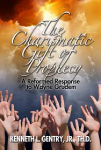
(by Kenneth Gentry)
A rebuttal to charismatic arguments for the gift of prophecy continuing in the church today. Demonstrates that all revelatory gifts have ceased as of the conclusion of the Apostolic era.
See more study materials at: www.KennethGentry.com
December 6, 2024
POSTMILLENNIALISM AND ISRAEL (4)
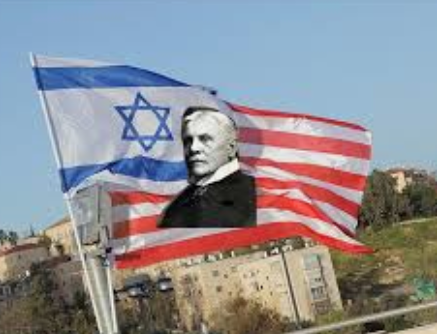 PMW 2024-094 by Kenneth L. Gentry, Jr.
PMW 2024-094 by Kenneth L. Gentry, Jr.
This is my last study in this four-part series on Israel in theology and the Bible. I am demonstrating the Reformed view of Israel in the Scriptures. We are now ready for my sixth observation:
6. THE NEW COVENANT CHURCH IS CALLED ABRAHAM’S SEED
Israel’s biological descent from Abraham was a source of great Jewish pride. God is often called in Scripture “the God of Abraham” (Gen 28:13; 31:42, 53; Exo 3:6, 15–16; 4:5; 1 Kgs 18:36; 1 Chron 29:18; 2 Chron 30:6; Psa 47:9; Matt 22:32; Mark 12:36; Luke 20:37; Acts 3:13; 7:32). Because he is “the God of Abraham” the Jews expected blessings in terms of their Abrahamic descent (Matt 3:9; 8:11; Luke 3:8; 13:16, 28; 16:23–30; 19:9; John 8:39, 53; Rom 11:1; 2 Cor 11:22). Yet in the new covenant, Gentile Christians are called the children of Abraham.
We see this in Galatians where Paul writes: “therefore, be sure that it is those who are of faith who are sons of Abraham. And the Scripture, foreseeing that God would justify the Gentiles by faith, preached the gospel beforehand to Abraham, saying, ‘All the nations shall be blessed in you’”(Gal 3:7–8). Then a few verses later he forthrightly declares: “if you belong to Christ, then you are Abraham’s offspring, heirs according to promise” (Gal 3:29).
7. THE NEW COVENANT CHURCH SEES OLD COVENANT ISRAEL AS THEIR “FATHERS”
Following up on the redemptive truth regarding our being children of Abraham, we discover also that new covenant Gentile Christians call Abraham “our father” (Rom 4:16). Paul can even call the old covenant patriarchs “our fathers” (1 Cor 10:1), clearly evincing a spiritual relationship uniting the new covenant people with the old covenant people, related as a seed to its fruit.
Three Views on the Millennium and Beyond
(ed. by Darrell Bock)
Presents three views on the millennium: progressive dispensationalist, amillennialist, and reconstructionist postmillennialist viewpoints. Includes separate responses to each view. Ken Gentry provides the postmillennial contribution.
See more study materials at: www.KennethGentry.com
8. THE NEW COVENANT CHURCH IS GIVEN JEWISH TITLES AND DESCRIPTIONS
Scripture frequently applies old covenant terms to new covenant citizens: we are the “the circumcision” (Rom 2:28–29; Phil 3:3; Col 2:11; cp. Gen 17:13; Acts 7:8), “a royal priesthood,” (Rom 15:16; 1 Pet 2:9; Rev 1:6; 5:10; cp. Exo 19:6), and the “temple of God” (1 Cor 3:16–17; 6:19; 2 Cor 1:16; Eph 2:21). These terms clearly reflect Israel’s covenantal identity, but are applied to the new covenant people.
Peter piles up some of these Old Testament designations and others applying them to the church. He calls Christians: “a chosen generation, a royal priesthood, an holy nation” (1 Pet 2:9–10), which is based on Exodus 19:5–6 and Deuteronomy 7:6. He and Paul call Christians “a peculiar people” (1 Pet 2:10; Tit 2:14), which is a familiar Old Testament designation for Israel (Exo 19:5; Deut 14:2; 26:18; Psa 135:4).
9. THE NEW COVENANT CHURCH IS ACTUALLY CALLED “ISRAEL”
Dispensationalists strongly resist the application of “Israel” to the church, asserting that “the Scriptures never use the term Israel to refer to any but the natural descendants of Jacob.” But if according to the New Scofield Reference Bible Abraham can have Gentiles as his “spiritual seed,” why may we not envision a spiritual Israel?
In fact, Paul applies the name “Israel” to Christians when he writes: “And as many as walk according to this rule, peace and mercy be upon them, and upon the Israel of God” (Gal 6:16). Here he is referring to Christians as “the Israel of God.” In the Greek the “and “preceding “the Israel of God,” functions epexegetically. That is, we should translate the verse “peace and mercy upon them, that is, upon the Israel of God.” Thus, according to Paul “as many as walk according to this rule [Christian faith]” are the “Israel of God.”
Olivet Discourse Made Easy (by Ken Gentry)
Verse-by-verse analysis of Christ’s teaching on Jerusalem’s destruction in Matt 24. Shows the great tribulation is past, having occurred in AD 70, and is distinct from the Second Advent at the end of history. Provides exegetical reasons for a transition from AD 70 to the Second Advent at Matthew 24:36.
See more study materials at: www.KennethGentry.com
Dispensationalists see Galatians 6:16 as applying to Jewish converts to Christ, “who would not oppose the apostle’s glorious message of salvation.” But such is surely not the case, for the following reasons. The entire epistle of Galatians opposes any claim to a special Jewish status or distinction: “For you are all sons of God through faith in Christ Jesus. For as many of you as were baptized into Christ have put on Christ. There is neither Jew nor Greek, there is neither slave nor free, there is neither male nor female; for you are all one in Christ Jesus” (Gal 3:26–28).
So here Paul declares that in the new covenant Christ does away with all ethnic distinctions. Why would he hold out a special word for Jewish Christians as “the Israel of God,” when he states immediately beforehand that we must not boast at all, save in the cross of Christ (Gal 6:14)? In fact, “in Christ Jesus neither circumcision nor uncircumcision avails anything, but a new creation” (Gal 6:15). Elsewhere, Paul can even speak of an uncircumcised Gentile as “a Jew who is one inwardly” whose “circumcision is that which is of the heart” (Rom 2:28–29).
10. THE NEW COVENANT REMOVES ALL ETHNIC DISTINCTIONS
In several places Paul drives home the point that the days of ethnic distinction in God’s kingdom are over with. “There is neither Jew nor Greek . . . for you are all one in Christ” (Gal 3:28). “There is no distinction between Greek and Jew, circumcised and uncircumcised” (Col 3:11). “For there is no distinction between Jew and Greek; for the same Lord is Lord of all, abounding in riches for all who call upon Him” (Rom 10:12). This principle of “neither Jew nor Greek” explains why the Old Testament promises and prophecies can apply to Gentile Christians and the pan-ethnic new covenant church. It also explains why we should not re-impose ethnic distinctions in our doctrine of the church.
Understanding the Olivet Discourse 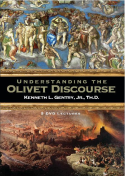
By Ken Gentry
This 5 DVD lecture set was filmed at a Bible Conference in Florida. It explains the entire Olivet Discourse in Matt. 24–25 from the (orthodox) preterist perspective. This lecture series begins by carefully analyzing Matt. 24:3, which establishes the two-part structure of the Discourse. It shows that the first section of the Discourse (Matt. 24:4–35) deals with the coming destruction of the temple and Jerusalem in AD 70. This important prophetic event is also theologically linked to the Final Judgment at the end of history, toward which AD 70 is a distant pointer.
For more educational materials: www. KennethGentry.com
CONCLUSION
Old Testament Israel was long the special, singular people of God. Dispensationalism is built on the view that she remains God’s special people and will one day come again to prominence in God’s dealings with man. In fact, the system is firmly rooted in the notion that Israel and the church must remain distinct. We have seen, though, that the Old Testament expected the expansion of Israel and that the New Testament speaks repeatedly of that expansion in such a way that we may see that the church is the new Israel.
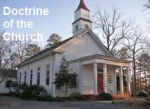 Christ’s Church (20 mp3 downloads)
Christ’s Church (20 mp3 downloads)
by Ken Gentry
An in-depth sermonic presentation of the doctrine of the church. This is vitally important today with the evangelical church not living up to its biblical calling
See more study materials at: www.KennethGentry.com
December 3, 2024
POSTMILLENNIALISM AND ISRAEL (3)
 PMW 2024-093 by Kenneth L. Gentry, Jr.
PMW 2024-093 by Kenneth L. Gentry, Jr.
This is my third installment on the question of Israel in redemptive history and the Bible. I am providing this four-part survey in order to expose significant errors in dispensationalism, held so dearly by so many.
Regarding what the Bible teaches about Israel, I will continue with my third observation:
3. THE NEW COVENANT CHURCH RECEIVES OLD TESTAMENT PROMISES
Not only do we learn that Old Testament prophecies regarding Israel are fulfilled in the church, but we even see that old covenant promises for Israel apply to the church. The new covenant church is the recipient of old covenant Israel’s blessings.
For instance, when Paul speaks to the Gentiles in Ephesians, he reminds them that “formerly” they were “at that time” in the past “strangers to the covenants of promise” (Eph 2:12). That is, in their past they were devoid of God’s “promise.” But this no longer is true!
Paul adds: “but now in Christ Jesus you who were formerly were far off have been brought near” (Eph 2:13). Interestingly, Paul is citing Isaiah 57:19, which was a promise of future blessing to Israel given though she was currently in sin. In Isaiah 56:1 through 66:24 Isaiah is focusing on the shame and glory of Zion, that is to be followed by her glory. Yet Paul applies a promise from Zion in Isaiah 57:19 to the Gentiles in Ephesus.
BEFORE JERUSALEM FELL
Doctoral dissertation defending a pre-AD 70 date for Revelation’s writing (459 pp; paperback). Thoroughly covers internal evidence from Revelation, external evidence from history, and objections to the early date by scholars.
For more study materials: https://www.kennethgentry.com/
In Galatians 3:29 he refers to the foundational promise to Israel contained in the Abrahamic Covenant. He applies that promise to the Gentiles: “if you belong to Christ, then you are Abraham’s offspring, heirs according to promise.”
Dispensationalists teach that the new covenant church is an aside, an intercalation in God’s major plan, a parenthesis in the outworking of redemptive history. The New Testament, however, deems her the direct recipient of God’s full blessings.
4. THE NEW COVENANT CHURCH IS NOT A MYSTERY WHOLLY UNREVEALED
Based on Ephesians 3, dispensationalist argue that the new covenant era, international church was a mystery that is “completely unrevealed in the Old Testament.” Certainly the clarity of the revelation of God’s expanding people increases in the New Testament. But that revelation was, in fact, given in the Old Testament.
Let’s look at dispensationalism’s key passage for this concept. Ephesians 3:5–6 reads: “which in other generations was not made known to the sons of men, as it has now been revealed to His holy apostles and prophets in the Spirit; to be specific, that the Gentiles are fellow heirs and fellow members of the body, and fellow partakers of the promise in Christ Jesus through the gospel.” We have already seen that the Old Testament anticipated this. Now we must note that Ryrie and the dispensationalists misread Paul’s statement. Consider the following.

Dispensational Distortions
Three Lectures by Kenneth Gentry. Reformed introduction to classic dispensationalism, with analysis of leading flaws regarding the Church, kingdom, redemptive history, and Christ. Helpful for demonstrating errors to dispensationalists.
See more study materials at: www.KennethGentry.com
To begin with, we must discern for whom the revelation was a mystery. Ephesians 3:3–6 reads: “By revelation he made known unto me the mystery . . . which in other ages was not made known unto the sons of men.” Thus, the “mystery” now revealed was not previously made known to the “sons of men,” that is, the Gentiles. It was made known to the “sons of Israel” through their prophets. The phrase “sons of Israel” appears often in the Old Testament (e.g., Exo 3:3, 14–15; 4:31; 5:14–15; 6:5; etc.), setting them over against the rest of the world, the Gentiles, the “sons of men.” When God speaks to Ananias he distinguishes between “the Gentiles” and “the sons of Israel” (Acts 9:15; cp. Luke 2:32; Acts 4:27).
This is made indisputably clear in Romans 16:25–26. There Paul points out that the “mystery” of Gentile salvation is hidden only from the Gentiles, not from the Old Testament prophets — for he defends his doctrine of the mystery by referring to “the scriptures of the prophets”: “the revelation of the mystery, which was kept secret since the world began, but now is made manifest, and by the scriptures of the prophets, according to the commandment of the everlasting God, made known to all nations for the obedience of faith.” Paul declares that the “mystery” is “now made manifest” to “all nations” — not just to Israel.
5. THE NEW COVENANT UNITES JEW AND GENTILE INTO ONE BODY
Paul teaches us that Gentile Christians of the new covenant church are grafted into the stock of Israel (Rom 11:16–19). Indeed, we are united with the patriarchs of the old covenant, even while many ethnic Jews are cut out of the kingdom of God: “if some of the branches were broken off, and you, being a wild olive, were grafted in among them and became partaker with them of the rich root of the olive tree, do not be arrogant toward the branches; but if you are arrogant, remember that it is not you who supports the root, but the root supports you” (Rom 11:17–18). God’s people are symbolized by one tree, not two.
Furthermore, Paul expressly declares that Christ’s death wholly removes the wall of separation between Jew and Gentile, merging them into one: “He Himself is our peace, who made both groups into one, and broke down the barrier of the dividing wall” (Eph 2:14). Nothing hints that this great redemptive truth is temporary and will be removed later in the millennium, as per dispensational teaching.
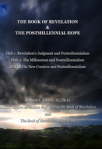 The Book of Revelation and Postmillennialism (Lectures by Ken Gentry)
The Book of Revelation and Postmillennialism (Lectures by Ken Gentry)
In the first of these three 50-minute lectures Gentry explains Revelation’s judgments to show they do not contradict postmillennialism. In the next two lectures he shows how the Millennium and the New Creation themes strongly support the gospel victory hope found in postmillennialism.
See more study materials at: www.KennethGentry.com
In fact, the “cementing” agent in this union is the powerful blood of Christ: “But now in Christ Jesus you who formerly were far off have been brought near by the blood of Christ” (Eph 2:13). Consequently, he was “abolishing [not temporarily halting] in His flesh the enmity” that separated Jew and Gentile (Eph 2:15). This comports well with what Christ teaches when he presents himself as the Good Shepherd in John 10:16: “And I have other sheep [Gentiles] which are not of this fold; I must bring them also, and they shall hear My voice; and they shall become one flock with one shepherd.”
Dispensationalism demands two groups and thus attempts to repair the barrier wall that Christ broke down as they make two people out of those whom Christ has made one. Whereas, the more biblical position would be to affirm: “What God has joined together, let no man separate.”
Click on the following images for more information on these studies:

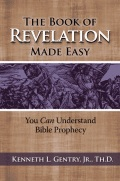
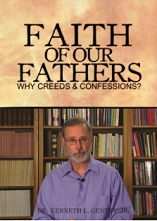
November 29, 2024
POSTMILLENNIALISM AND ISRAEL (2)
P MW 2024-092 by Kenneth L. Gentry, Jr.
MW 2024-092 by Kenneth L. Gentry, Jr.
In my last posting I began consideration of an important debate topic separating dispensationalism from most of the rest of evangelical theology: the question of Israel. In this article I am beginning a brief survey showing what Scriptures teaches, while setting it over against dispensationalism’s view. How does the Bible see Israel?
1. THE OT ANTICIPATES THE EXPANSION OF GOD’S PEOPLE
The Old Testament writers foresee a time in which God will expand his people by bringing blessings on the Gentiles and including them within Israel. This hope is established early in Israel’s formative history when God establishes his covenant with Abraham: “As for Me, behold, My covenant is with you, / And you shall be the father of a multitude of nations” (Gen 17:4).
Perhaps the clearest and more remarkable expression of this appears in Isaiah 19:23–25. There we read that God will include Israel’s greatest enemies in his covenant:
“In that day there will be a highway from Egypt to Assyria, and the Assyrians will come into Egypt and the Egyptians into Assyria, and the Egyptians will worship with the Assyrians. In that day Israel will be the third party with Egypt and Assyria, a blessing in the midst of the earth, whom the Lord of hosts has blessed, saying, ‘Blessed is Egypt My people, and Assyria the work of My hands, and Israel My inheritance.’”
Zechariah expresses this hope by referring to Israel’s earliest enemy within the Promised Land:
“And a mongrel race will dwell in Ashdod, / And I will cut off the pride of the Philistines. / And I will remove their blood from their mouth, / And their detestable things from between their teeth. / Then they also will be a remnant for our God, / And be like a clan in Judah, / And Ekron like a Jebusite.” (Zech 9:6–7)
The conversion of the Gentiles in the new covenant is simply the fulfillment of these prophecies which adopt Israel’s enemies into her family.
 “Jesus, Matthew, and the Rejection of Israel” (downloadable mp3)
“Jesus, Matthew, and the Rejection of Israel” (downloadable mp3)
by Ken Gentry
Surveys the Gospel of Matthew and highlights the numerous references — direct and indirect — that suggest that Matthew’s Gospel was written (at least in part) to demonstrate that God was rejecting Israel. A great many passages in Matthew are surveyed and briefly elaborated upon.
See more study materials at: www.KennethGentry.com
2. THE NT APPLIES OT PROPHECIES TO THE CHURCH
In Jeremiah 31:31 we read of God’s prophecy of the new covenant with Israel: “‘Behold, days are coming,’ declares the LORD, ‘when I will make a new covenant with the house of Israel and with the house of Judah.” Christ inaugurates this “new covenant” toward the end of his ministry as he establishes the New Testament phase of his church. During his Last Supper he states: “This cup which is poured out for you is the new covenant in My blood” (Luke 22:20).
Dispensationalist J. Dwight Pentecost is quite correct when he writes of Christ’s establishing the Lord’s Supper: “In its historical setting, the disciples who heard the Lord refer to the new covenant . . . would certainly have understood Him to be referring to the new covenant of Jeremiah 31.” What could be more obvious? The prophecy of God’s new covenant with Israel applies to the New Testament church.
In fact, the sudden appearance of the “new covenant” in the New Testament record without qualification or explanation, demands that it refer to Jeremiah’s well-known new covenant (see: Matt 26:28; Mark 14:24; Luke 22:20; 1 Cor 11:25). Paul even promotes the new covenant as an important aspect of his ministry: God “also made us adequate as servants of a new covenant” (2 Cor 3:6). Thus, he is a minister of the new covenant even though he is the “apostle to the Gentiles” (Rom 11:13; cp. Acts 9:15; 22:21; 26:17; Rom 1:5; 15:16; Gal 1:16; 2:7; Eph 3:1, 8; 1 Tim 2:7; 2 Tim 4:7).
In Acts 15 James speaks of the conversion of the Gentiles as a fulfillment of a distinctively Jewish-sounding prophecy in Amos 9:11–12. James sees in the conversion of the Gentiles a rebuilding of “the tabernacle of David”:
“Simeon has related how God first concerned Himself about taking from among the Gentiles a people for His name. ‘And with this the words of the Prophets agree, just as it is written, “After these things I will return, / And I will rebuild the tabernacle of David which has fallen, / And I will rebuild its ruins, / And I will restore it, / In order that the rest of mankind may seek the Lord, / And all the Gentiles who are called by My name,” / Says the Lord, who makes these things known from of old.’” (Acts 15: 14–18)
Thus, he sees the converted Gentiles as entering the prophetic “tabernacle of David,” thereby sharing in this Jewish promise.
Tongues-speaking: Meaning, Purpose, and Cessation
 by Ken Gentry
by Ken Gentry
The position presented within is that tongues-speaking allowed the gift person to speak in a known human language without previously knowing it; tongues brought inspired revelation from God; the gift was a sign confirming the apostolic witness and warning of the coming destruction of Jerusalem; and therefore the gift ceased in the first century.
See more study materials at: www.KennethGentry.com
During her rebellion in the Old Testament, God promises “the sons of Israel” that “in the place / Where it is said to them, / ‘You are not My people,’ / It will be said to them, / ‘You are the sons of the living God’” (Hos 2:10b). Paul cites this glorious prophecy of inclusion in God’s family and directly applies it to the church:
“even us, whom He also called, not from among Jews only, but also from among Gentiles. As He says also in Hosea, ‘I will call those who were not My people, “My people,” / And her who was not beloved, “beloved.”’ / And it shall be that in the place where it was said to them, “you are not My people,” / There they shall be called sons of the living God.’” (Rom. 9:25–27)
But there is more! I will continue this study in my next installment.
Click on the following images for more information on these studies:



November 26, 2024
POSTMILLENNIALISM AND ISRAEL (1)
 PMW 2024-091 by Kenneth L. Gentry, Jr.
PMW 2024-091 by Kenneth L. Gentry, Jr.
Because of the prominence of dispensationalism and the Left Behind phenomenon — and whatever moon is now showing –– in evangelical circles, it is important for us to reflect on a fundamental emphasis in contemporary prophecy discussions: Israel. This is important in that Israel plays a prominent role in Scripture. But what is her role?
As all Christians know, throughout most of the Old Testament Israel is God’s special people — beginning in seed form with the calling of Abraham in Genesis 12. She is God’s elect nation (Deut 7:7–8 ; 10:15; Zech 2:8; Rom 3:1–3; 11:1) and the focal point of his redemptive mercies in history (Deut 4:7–8; Psa 147:19–20; Amos 3:2; Rom 9:4). Because of her commanding presence in old covenant history and her central role in Old Testament prophecy she becomes a crucial issue in understanding the Bible.
Dispensationalism’s Error Presented
Perhaps the leading distinctive of dispensational theology is that ethnic Israel remains God’s key and favored people who will continue to star in his major plan for history. This view of Israel involves dispensationalism in its most destructive error. All of dispensational theology orbits around Israel as its theological center of gravity.
Two of the most destructive results of dispensationalism’s error regarding Israel are: (1) Its view of Israel destroys the unity of God’s people by creating two peoples of God in history (Israel and the church). (2) Its prophetic expectation built on Israel lowers the status of the church (by exalting geo-political Israel) and retrogressively re-institutes blood sacrifices as history’s final and highest redemptive period (the millennium).
The Divorce of Israel: A Redemptive-Historical Interpretation of Revelation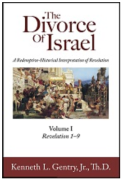
This long-awaited commentary has now been published. It is an 1800 page, two-volume deeply exegetical, academic commentary on the Bible’s most mysterious book.
Click: https://www.kennethgentry.com/the-divorce-of-israel-2-vols-by-gentry-pre-publication-offer/
See more study materials at: www.KennethGentry.com
Let us focus briefly on this error as explicated by dispensationalism’s leading scholar, Charles C. Ryrie. Ryrie points to the centrality and exaltation of Israel as the first of the three essential elements of dispensationalism: “A dispensationalist keeps Israel and the Church distinct.” He defends this position over against all other evangelical theologies by arguing that:
“(1) The Church is not fulfilling in any sense the promises to Israel. (2) The use of the word Church in the New Testament never includes unsaved Israelites. (3) The Church Age is not seen in God’s program for Israel. It is an intercalation. (4) The Church is a mystery in the sense that it was completely unrevealed in the Old Testament and now revealed in the New Testament. (5) The Church did not begin until the day of Pentecost and will be removed from this world at the rapture which precedes the Second Coming of Christ.”
Unfortunately, each one of Ryrie’s points is mistaken. As a result, the dispensational house is built on sinking sand. Let us see how this is so.
Dispensationalism’s Error Demonstrated
Scripture does not support Ryrie’s distinctive assertions, which are absolutely fundamental to the dispensational system. Rather, it teaches that old covenant Israel is the seed of God’s people which flowers in history, becoming the expanded, global people of God in the new covenant Church.
Israel in the Bible and History (9 mp3 lectures)
by Ken Gentry
The people of Israel are the people of God. But the modern church is divided over the nature, call and identity of Israel. This lecture series covers key issues for understanding the biblical concept of Israel.
See more study materials at: www.KennethGentry.com
Some call this view “replacement theology” and fear that this position altogether removes Israel from God’s plan and replaces her with a new and distinct people. But a better description would be to call it “fulfillment theology.” That is, this view understands the new covenant as expanding God’s people from a single ethnic people embodied in a geo-political structure to a pan-ethnic people embodied in a new structure, the new, true, spiritual, covenant Church.
The more common evangelical and Reformed view of the oneness of God’s people recognizes old covenant Israel as the actual people of God in the Old Testament. They function as the seed of the coming global people of God in the New Testament. As the Westminster Confession of Faith (written in the 1640s) expresses it, Israel is “a church under age” (WCF 19:3).
Let me demonstrate the biblical warrant for this “fulfillment theology” view. Beginning in my next article. (Sorry. I am weary.)
Click on the following images for more information on these studies:

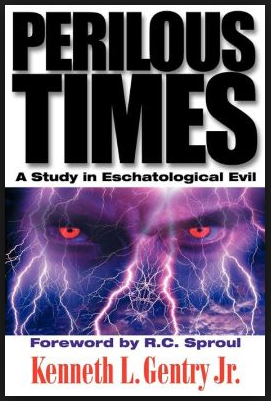
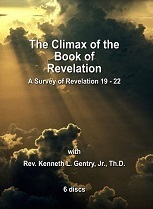
November 22, 2024
PHYSICAL RESURRECTION AND NEW CREATION
 PMW 2024-090 by Kenneth L. Gentry, Jr.
PMW 2024-090 by Kenneth L. Gentry, Jr.
A Brief Testimony
When I enrolled at Reformed Theological Seminary in Jackson, Mississippi, I had just converted out of dispensationalism. I had been thoroughly schooled in dispensationalism at Tennessee Temple College in Chattanooga, Tennessee. Upon graduating from Temple with a degree in Biblical Studies, I enrolled in the M.Div. program at another dispensational institution, Grace Theological Seminary in Winona Lake, Indiana.
While at Grace I stumbled onto O. T. Allis’ book Prophecy and the Church. This book led me out of dispensationalism and toward a Reformed eschatology. My transformation was not complete upon reading Allis, however. That completion would not be reached until I had studied for two years at Reformed Seminary, to which I transferred after two years at Grace.
Introducing Ladd
While at RTS I was somewhat surprised that in a NT Theology course we were to read George E. Ladd’s A Theology of the New Testament. Ladd, of course, was premillennial (though vehemently opposed to dispensationalism). Despite his premillennialism, his work has much to commend it to Reformed Christians. In fact, as I am researching a book on the two-age doctrine of redemptive history, I once again am finding Ladd to be quite helpful. And he even cites Geerhardus Vos, whose work is essential for Reformed theology today.

He Shall Have Dominion
(paperback by Kenneth Gentry)
A classic, thorough explanation and defense of postmillennialism (600+ pages). Complete with several chapters answering specific objections.
See more study materials at: www.KennethGentry.com
Some Ladd observations
I have now completed re-reading Ladd’s 1964 work, The Presence of the Future. This remarkable book is very helpful for explaining the two-age doctrine and its sister position of the “now by not yet” view of NT revelation. The two-age doctrine presents the structure of redemptive history as contrasting “this age” (the fallen age under the first Adam, i.e., history since the fall) with “the coming age” (the perfect, consummate new creation order under the second Adam). Though these two ages are distinguished, they overlap in redemptive history beginning with the ministry of Christ and continuing until his second coming. This overlap era is known as “the last days.”
In this last-days overlap we can taste of the good things of “the age to come” even though we cannot experience them to their fullest extent. We live in the time of the “now but not yet.” That is, we are now sanctified, though we await complete, full sanctification (body and soul) in the consummate order after Christ returns. We are now justified, although we await complete, full justification in the consummate order after the final judgment. We are now spiritually resurrected, but await our future bodily resurrection when Christ returns to effect the global resurrection of the dead. We are now in the spiritual new creation, although we await the final, consummate material recreation with the establishing of the consummate order. On and on I could go with illustrations. This is what we mean by the “now but not yet” understanding of New Testament revelation.
Have We Missed the Second Coming: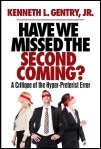
A Critique of the Hyper-preterist Error
by Ken Gentry
This book offers a brief introduction, summary, and critique of Hyper-preterism. Don’t let your church and Christian friends be blindfolded to this new error. To be forewarned is to be forearmed.
For more Christian educational materials: www.KennethGentry.com
Now back to why I am writing this post. In Ladd’s The Presence of the Future I have found many nicely put declarations regarding the two-ages and the “now but not yet” structure of redemptive history. The present article is not intending to prove these twin views. Rather it will simply show how they serve well in historic Christian orthodoxy as we come to understand the fullness of our salvation.
So, I will simply cite a few sentences from Ladd in order to whet your appetite for considering this fine work, and for preparing you for my postmillennial book that I am writing on the two-age doctrine. Though Ladd argues for premillennialism in this work, those arguments can be easily adapted by postmillennialists who also believe God’s glory is to be manifested in history. So, allow me to cite a few of Ladd’s helpful comments that give proper attention to the material order which God created for us.
On p. 59 Ladd states:
“the biblical idea of redemption always includes the earth. Hebrew thought saw an essential unity between man and nature…. The Old Testament nowhere holds forth the hope of bodiless, non-material, purely ‘spiritual’ redemption as did Greek thought. The earth is the divinely ordained scene of human existence.”
If only the new Gnostics among us could understand that God created us as material beings to be distinguished from angels who are spiritual beings! A part of the failure of this new Gnosticism is due to its not being able to comprehend the two-age structure of redemptive history.
House Divided: The Break-up of Dispensational Theology By Greg Bahnsen and Ken Gentry
By Greg Bahnsen and Ken Gentry
This book presents and defends Christian Reconstruction theology, particularly theonomic ethics and postmillennial eschatology. It does to by responding to dispensationalism’s social and exegetical theology.
For more educational materials: www. KennethGentry.com
On p. 61 Ladd writes:
“The dissolution of the natural order is not designed to accomplish its destruction but to make way for a new perfect order arising out of the old imperfect one…. The final visitation of God will mean the redemption of the world; for a redeemed earth is the scene of the future Kingdom of God.”
He makes this statement while discussing the several “day of the Lord” events that appear in history. They are all related and they all point to the final “day of the Lord” that arrives with the return of Christ to establish the consummate new order.
On p. 63 Ladd continues:
“Salvation for man does not mean deliverance from creaturehood, for it not an evil thing but an essential and permanent element of man’s true being. Salvation does not mean escape from bodily, creaturely existence. On the contrary, ultimate redemption will mean the redemption of the whole man. For this reason, the resurrection of the body is an integral part of the biblical hope. The corollary of this is that creation in its entirety must share in the blessings of redemption. There is no Greek dualism or Gnosticism in the Old Testament hope.”
Well put! Even for a premillennialist. I highly recommend this older work for much that is good in it.
Reformed Eschatology in the Writings of Geerhardus Vos
Ed. by Ken Gentry and Bill Boney
This is a collection of several key eschatological studies by the renowned Reformed theologian Geehardus Vos. We have modernized Vos’ grammar and syntax and updated his layout style according to modern publishing conventions (shorter sentences and paragraphs). We did this without changing any of Vos’ arguments.
For more information on this new Vos work or to order it, see:
https://www.kennethgentry.com/reformed-eschatology-in-the-writings-of-geerhardus-vos/
November 19, 2024
YAHWEH
 PMW 2024-089 by Kenneth L. Gentry, Jr.
PMW 2024-089 by Kenneth L. Gentry, Jr.
In Hebrew God’s distinctive covenant name appears as four consonants: YHWH (pronounced Yahweh). It appears in English versions in all caps as: LORD (or sometimes GOD when linked with Adonai, which also is translated “Lord”). In Exodus 3:14 God defines himself via his special covenantal name. This name is so significant in redemptive history that the Scriptures can simply mention “the name” (Lev. 24:11, 16). God jealously declares that this is his name “forever” (Exo. 3:15; cp. Psa. 102:12; 135:13).
This name first appears, not in Gen. 1 where God’s power is exhibited (therefore, Elohim appears there). Rather it appears first when the LORD lovingly creates then covenants with Adam (see note at Gen. 2:4). Contrary to critics, it does not represent another and competing tradition about who the God of Israel is, but is used in his revelation from the beginning.
This revelation certainly is not of a new name developed here. After all, why would Moses go to a people who are asking who sent him, then give them a name they had never heard before? Rather it is being urged here to establish Moses’s authoritative call to lead them. Besides in vv. 15–16 we see that it is his name “forever” and was used with the God of “your fathers.” In fact, it appears in Genesis 162 times, with thirty-four of those times being spoken by actors in the Genesis drama, not just Moses as the narrator.

As It Is Written: The Genesis Account Literal or Literary?
Book by Ken Gentry
Presents the exegetical evidence for Six-day Creation and against the Framework Hypothesis. Strong presentation and rebuttal to the Framework Hypothesis, while demonstrating and defending the Six-day Creation interpretation.
See more study materials at: www.KennethGentry.com
Here in Exodus 3:14 he explains his name as meaning “I am that I am.” This self-designation is peculiarly important to our understanding of God’s covenant love. This name-statement is found in the imperfect tense in Hebrew, thereby emphasizing a constantly manifested quality. It is a very active name. Jewish Hebrew scholar Umberto Cassuto comments: “There is also implicit in this interpretation the thought of implementing the promises: I am who I am always, ever alike, and consequently I am true to My word and fulfil it.”
The name and its meaning is enormously important for this very moment in Moses’s life and Israel’s history. For he is going to lead Israel out of Egypt by confronting the most powerful ruler in the riches nation on earth. He needs to know God is always with him. As God declares later to Isaiah: “My people shall know [i.e., experience the reality of] my Name” (Isa. 52:6).
From this name we may discern certain divine characteristics that greatly impact redemption. (1) It requires that he is wholly uncreated and self-existent. Nothing accounts for God’s existence other than himself (John 5:26; Acts 17:25; cp. Isa . 40:20–25). Thus, Moses’s Pentateuch opens with “in the beginning God” (Gen. 1:1a) — for he “created all things” (Eph. 3:9). Yahweh is not like the dependant primeval forces that supposedly gave birth to the Egyptian gods. Moses need not fear those mythological gods.
(2) It speaks of his eternity: He is not constrained or defined by time; he is of eternal duration. The combination of the verb tense (imperfect) and its repetition (“I am” / “I am”) emphasize his uninterrupted, continuous existence. “From everlasting to everlasting, You are God” (Psa. 90:2; cp. Psa. 93:1–2; Isa. 40:28; 57:15).
(3) It relates his absolute sovereignty: He determines all things from within his own being. He can declare absolutely “I am that I am,” without fear of anything challenging or overthrowing him. He has no need of anything outside of himself (Isa. 40:9–31), for “I am God, and there is no one like Me” (Exo. 9:14; cp. Isa. 44:7; Jer. 50:44).
(4) Because of all of this he is unchangeable. He declares “I, the LORD, do not change” (Mal. 3:6). He is forever the same, for in him “there is no variation, or shifting shadow” (Jms. 1:17). Thus, he can be trusted to be the same “yesterday and today and forever” (Heb. 13:8; cp. Num. 23:19).
Reformed Eschatology in the Writings of Geerhardus Vos
Ed. by Ken Gentry and Bill Boney
This is a collection of several key eschatological studies by the renowned Reformed theologian Geehardus Vos. We have modernized Vos’ grammar and syntax and updated his layout style according to modern publishing conventions (shorter sentences and paragraphs). We did this without changing any of Vos’ arguments.
For more information on this new Vos work or to order it, see:
https://www.kennethgentry.com/reformed-eschatology-in-the-writings-of-geerhardus-vos/
Kenneth L. Gentry Jr.'s Blog
- Kenneth L. Gentry Jr.'s profile
- 85 followers



